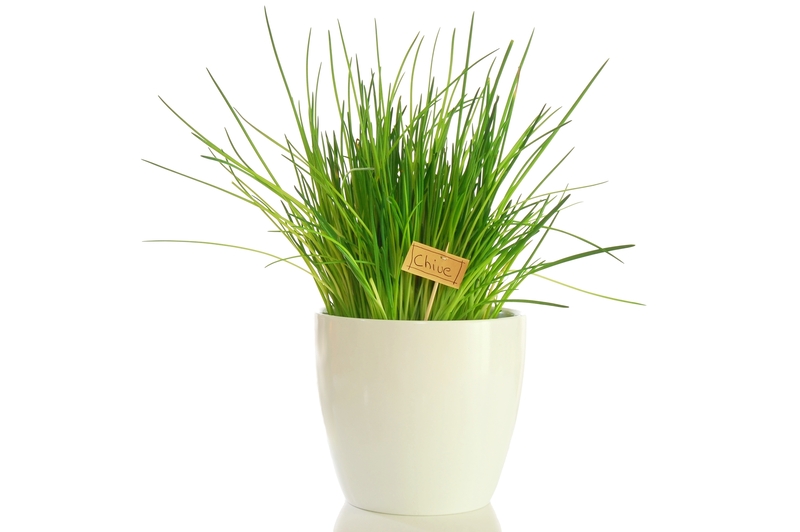Beat the Heat--Strategies to Avoid Drought Stress on Your Lawn This Summer
Summers can be brutal on lawns. As temperatures rise and rainfall declines, homeowners often battle to keep their grass green and healthy. Drought stress is a common adversary, causing unsightly brown patches or even permanent damage. The good news is that with the right techniques, you can beat the heat and prevent drought damage, ensuring your lawn thrives even in the hottest months.
Understanding Drought Stress on Lawns
Drought stress in lawns occurs when grass loses more water through evaporation and transpiration than it receives from rain or irrigation. This leads to wilting, discoloration, and stunted growth. Recognizing the early signs and knowing how to respond is critical to maintaining a lush, resilient yard.
Signs of Drought Stress
- Browning grass blades that don't bounce back after being walked on
- Grass taking on a bluish-gray or dull hue
- Soil hardening and pulling away from roots
- Slowed grass growth, increasing the visibility of underlying soil
- Light footprints remaining long after stepping on the lawn
*Recognizing these signs early is the first step in preventing irreversible drought damage to your lawn.*

How to Protect Your Lawn From Drought Stress
Armed with this knowledge, you can implement several effective strategies to avoid drought stress on your lawn. Each step below contributes to a healthier, more drought-tolerant yard.
1. Choose the Right Grass Species
Some grass varieties are simply more resilient in hot, dry weather. Selecting drought-resistant turfgrass can make lawn maintenance much easier.
- Bermuda Grass - Highly drought-resistant, ideal for southern climates
- Zoysia Grass - Tolerates heat and low moisture conditions
- Buffalo Grass - Native to North America, naturally adapted to arid climates
- Tall fescue - Good drought tolerance for cooler regions
If establishing a new lawn or reseeding, opt for varieties that suit your area's climate and water availability.
2. Water Deeply and Infrequently
Smart watering practices are crucial in avoiding drought stress. Instead of shallow, frequent watering, aim to water deeply and less often.
- Water early in the morning (between 4-8 a.m.), reducing evaporation loss
- Apply about one inch of water per week, including rainfall
- Soak the soil to a depth of 6-8 inches to encourage deep rooting
- Use rain gauges or a moisture meter to avoid overwatering
Deep watering trains roots to grow further down where moisture remains longer, making your lawn more drought-tolerant.
3. Mow at the Proper Height
Many homeowners mow their lawns too short, exposing soil to the sun and increasing drought stress. Here's how to mow to minimize heat damage:
- Set your mower blade higher (generally 3-4 inches for most grass types)
- Never remove more than 1/3 of the grass blade at a time
- Leave grass clippings on the lawn as natural mulch
Taller grass shades the soil, reduces evaporation, and creates a deeper root system, all helping your lawn survive heat and drought.
4. Maintain Healthy Soil
Healthy soil is the foundation of a drought-resistant lawn. Here are ways to improve soil health:
- Test your soil for pH and nutrient content every 2-3 years
- Incorporate organic matter, such as compost, to improve water retention
- Aerate compacted soil annually to enhance root penetration and water movement
Improved soil structure supports stronger, deeper roots that are better equipped to draw water in dry conditions.
5. Mulch for Moisture Conservation
Mulching isn't just for garden beds--it's also excellent for protecting your lawn from drought.
- Use grass clippings as a thin, even layer over your lawn
- Certain commercial mulches can be used in trouble spots
- Add organic mulches under trees and shrubs bordering the lawn
Mulch helps insulate soil, slows evaporation and keeps grass roots cooler during summer's extremes.
6. Reduce Lawn Traffic During Heatwaves
Foot traffic and compaction add stress to already struggling grass. Minimize activity on your lawn during periods of intense heat and dryness. Encourage kids, pets, and guests to use walkways or patios instead.
7. Fertilize Carefully
While fertilization encourages healthy growth, over-fertilizing during drought can cause more harm than good.
- Use a slow-release, balanced fertilizer in spring
- Avoid fertilizing in the peak of summer heat
- Always water thoroughly after applying fertilizer
*Proper timing and application give your lawn needed nutrients without contributing to drought stress.*
8. Manage Weeds Effectively
Weeds compete with grass for water and nutrients, worsening the impact of drought. Keep your lawn weed-free by:
- Pulling weeds by hand after rain when the ground is soft
- Applying pre-emergent herbicides early in the season
- Maintaining dense, healthy turf to naturally discourage weed growth
9. Reseed and Repair Bare Spots
Bare or thin spots on your lawn are vulnerable to heat damage and drought stress. Fill in these areas with appropriate drought-tolerant grass seed early in the growing season. Water and cover with a thin layer of compost for best results.
10. Accept Dormancy, If Needed
*Most lawns, especially cool-season grasses, may naturally enter dormancy during extended heat.* Grass may turn brown, but provided the crowns remain alive, it will bounce back with cooler weather and rain. Limiting lawn traffic and avoiding fertilization during these periods will prevent further damage.
Smart Water Conservation Tips
In drought-prone regions, water conservation is crucial. Consider augmenting your strategies with these smart watering techniques:
- Install a programmable irrigation system with soil moisture sensors
- Harvest rainwater in barrels and use it for lawn and garden irrigation
- Choose native, water-efficient landscaping (xeriscaping) for portions of your yard
- Group plants with similar water needs together
Common Mistakes That Cause or Worsen Drought Stress
Even with the best intentions, well-meaning homeowners sometimes make mistakes that intensify drought stress on lawns. Avoid these pitfalls for a thriving yard:
- Overwatering, which weakens roots and wastes resources
- Mowing too low, exposing soil to sun and evaporation
- Applying fertilizer at the peak of heat waves
- Neglecting soil health with no aeration or organic matter
- Ignoring weed problems that exacerbate water stress

FAQ: Lawn Care During Drought
-
Can I revive my lawn after severe drought?
Many lawns can recover once adequate water returns. Reseed dead areas, improve soil health, and follow proper watering strategies going forward. -
How often should I mow during a drought?
Mow less frequently, only when the grass is actively growing. Leave clippings to help retain moisture. -
Should I water my lawn every day during hot weather?
No. Water deeply and infrequently to promote root development and drought resistance. -
What's the best time of day to water a lawn?
Early morning, before evaporation rates peak, is best.
Conclusion: Keeping Your Lawn Green in the Heat
Beating the heat and minimizing drought stress on your lawn requires a holistic approach: wise watering, mowing, fertilizing, and soil care go hand-in-hand. Select drought-resistant grass varieties, practice sensible water conservation, and remain vigilant for signs of stress. With these strategies, you can maintain a thick, healthy, green lawn--even during the dog days of summer.
Remember, long-term lawn care is about creating resilience--not just short-term fixes. Equip your yard for success and enjoy a cool, inviting carpet of green all season long.